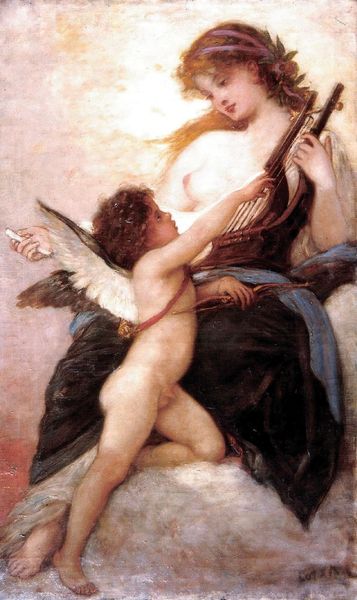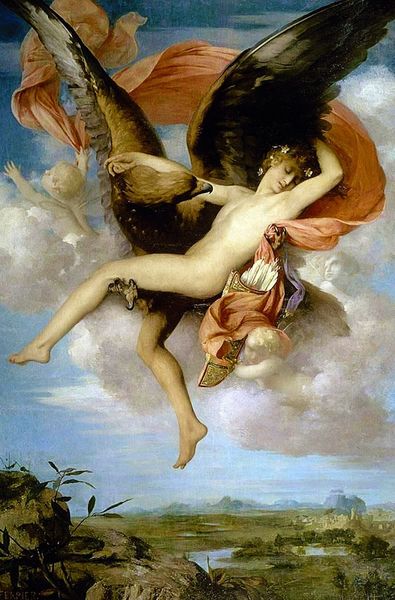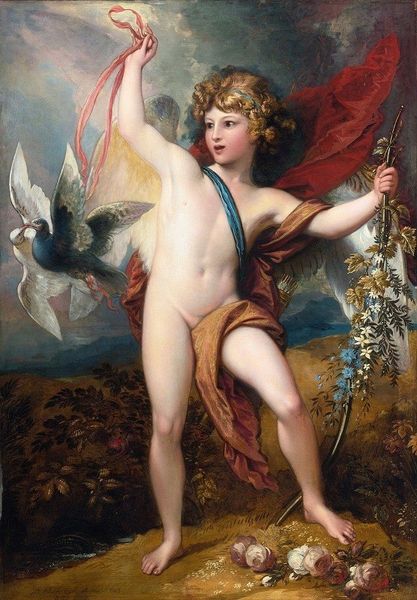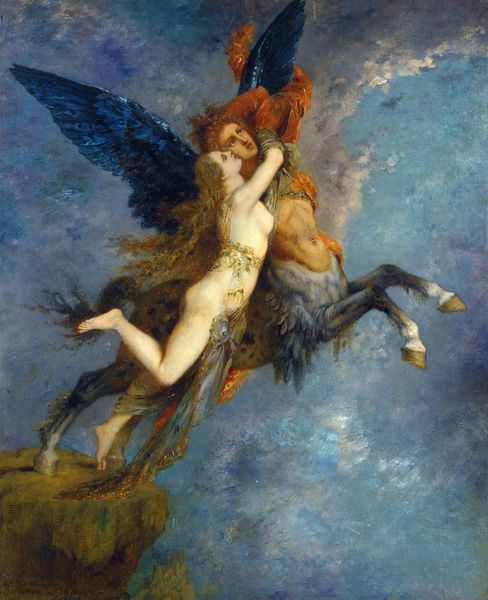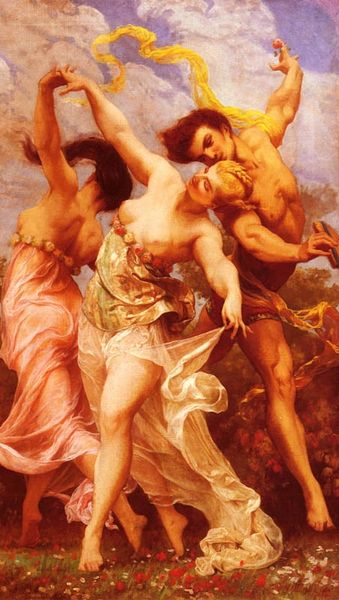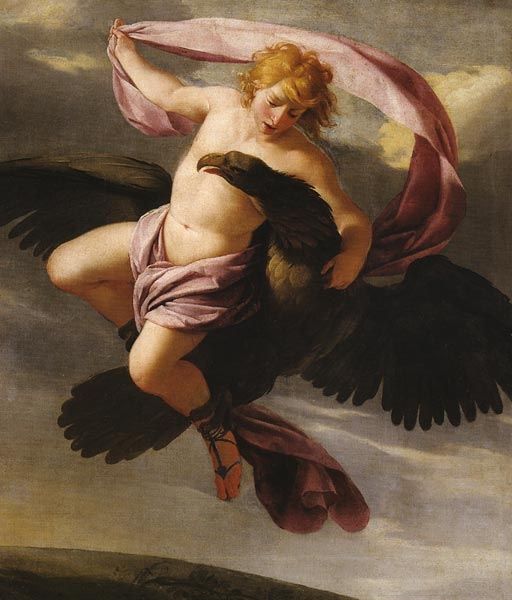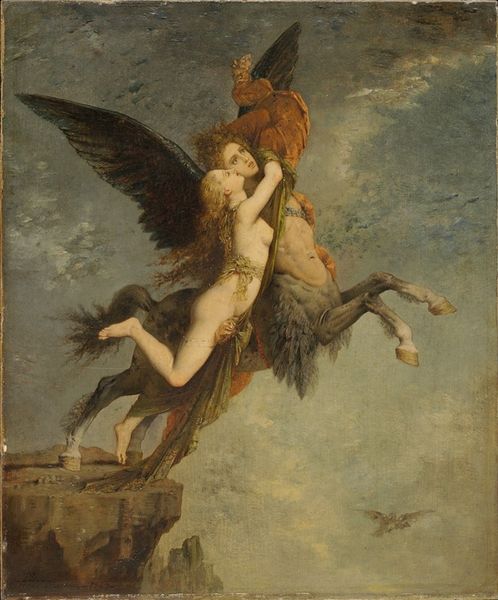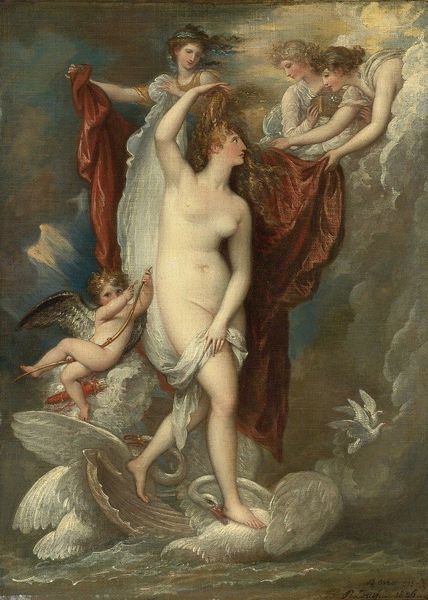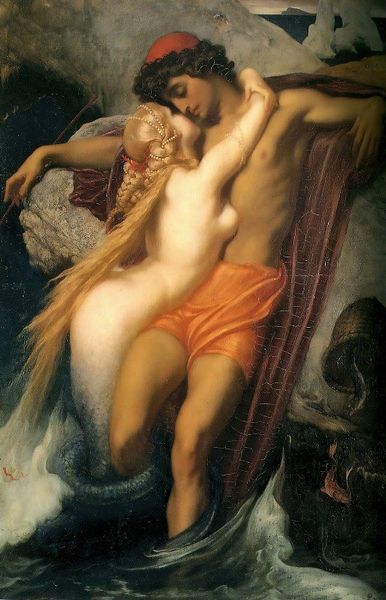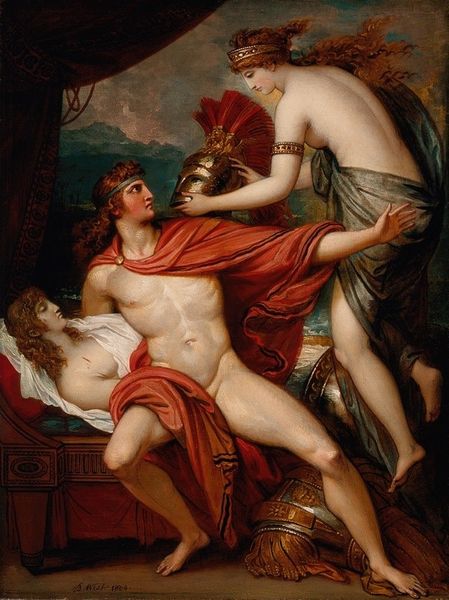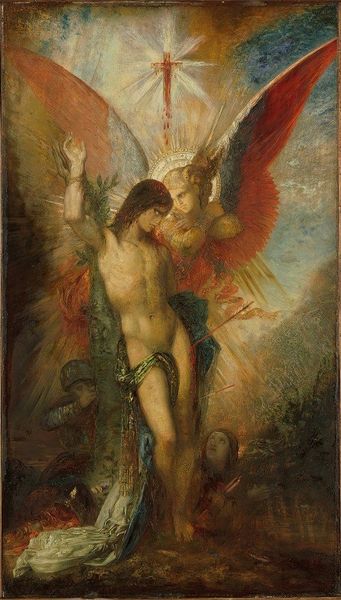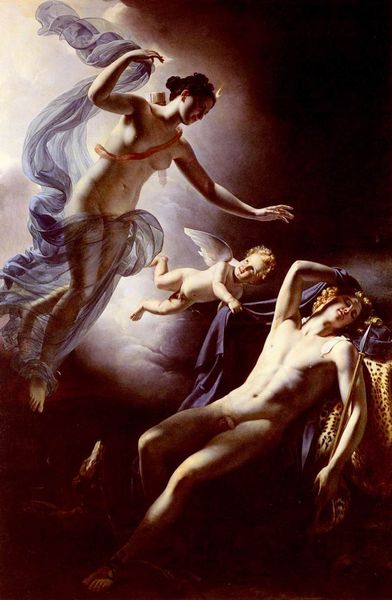
#
abstract painting
#
possibly oil pastel
#
oil painting
#
neo expressionist
#
acrylic on canvas
#
underpainting
#
painting painterly
#
animal drawing portrait
#
portrait art
#
expressionist
Copyright: Public domain
Editor: This painting is called "The Abduction of Ganymede" by Peter Paul Rubens. There isn't a listed date for when it was made. I am really struck by how dynamic it is; the diagonal composition, the dramatic lighting, and the... well, the subject matter, it all creates this intense sense of motion and drama. What do you see in this piece, considering its place in art history and the symbols it employs? Curator: This portrayal captures a pivotal moment, loaded with cultural memory. The eagle, an ancient symbol of power and sovereignty, swoops down, carrying Ganymede heavenward. But look closer: is it truly abduction? Or is it a kind of ascension, a transformation? Rubens uses the symbol of the eagle, traditionally associated with Jupiter/Zeus, to signal a divine intervention. What resonates for me is how this myth reflects our persistent human fascination with flight, transcendence, and perhaps even, forbidden desires. Editor: Forbidden desires? That’s interesting. Could you elaborate on that a bit? Curator: Ganymede's story isn’t just about being taken; it's about being chosen for his beauty, to become the cupbearer of the gods, an object of favor, perhaps even... affection. Rubens teases at the complexity of power, desire, and beauty with carefully chosen and recognisable symbolic references to Greek mythology, allowing the viewer to project their own understanding of the human condition into Ganymede’s ascent. He places an old narrative into a new time by recontextualizing his interpretation on canvas, reminding his contemporary audiences of humanity's longstanding desire for answers to some of our most intimate curiosities. Editor: I hadn't considered it in that light before. It’s incredible how one painting can contain so many layers of meaning. Curator: Indeed. Art holds a mirror to our past while illuminating the present. This piece exemplifies how symbols act as bridges across time. It reminds us to contemplate what narratives and beliefs we continue to pass on.
Comments
No comments
Be the first to comment and join the conversation on the ultimate creative platform.
